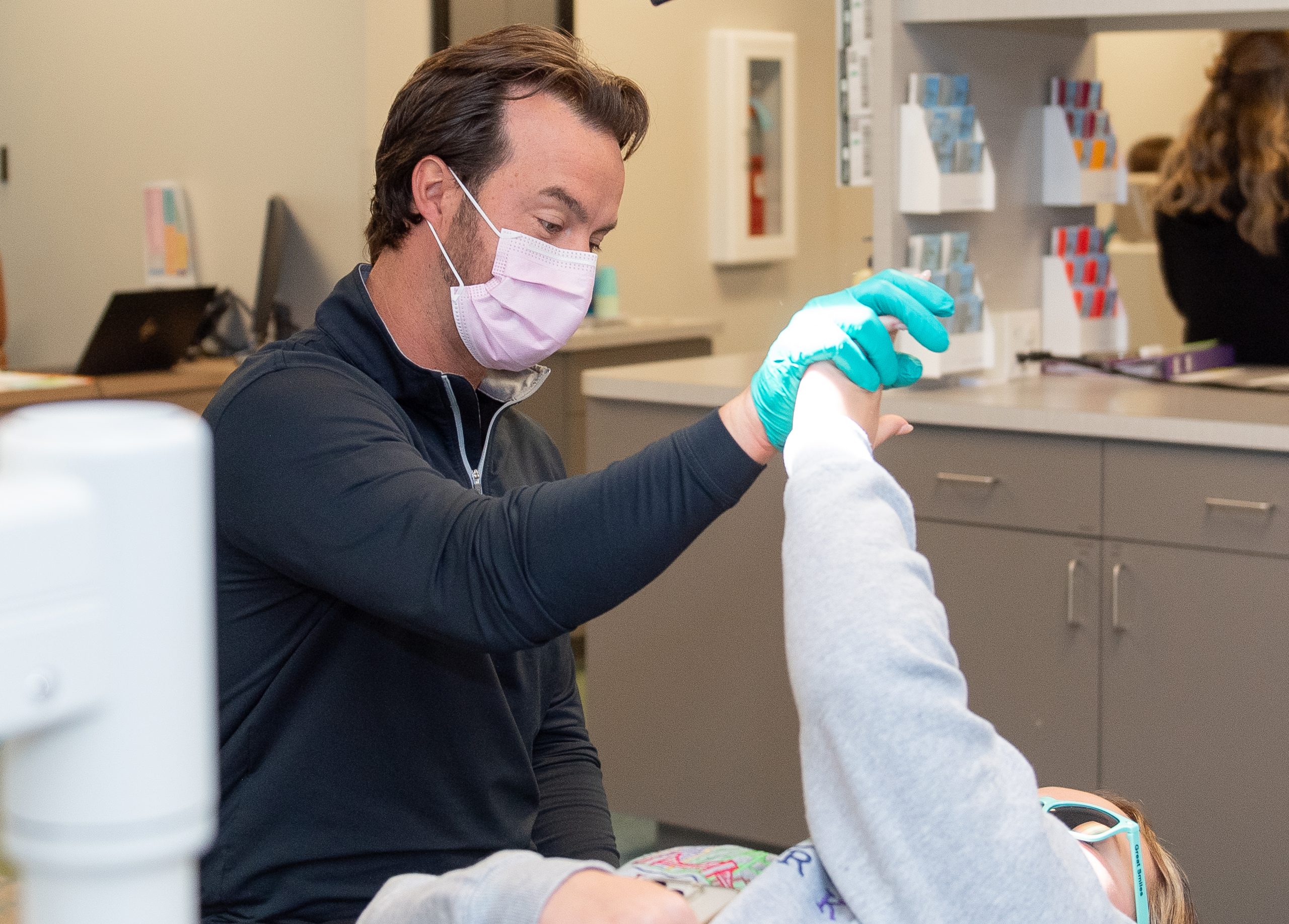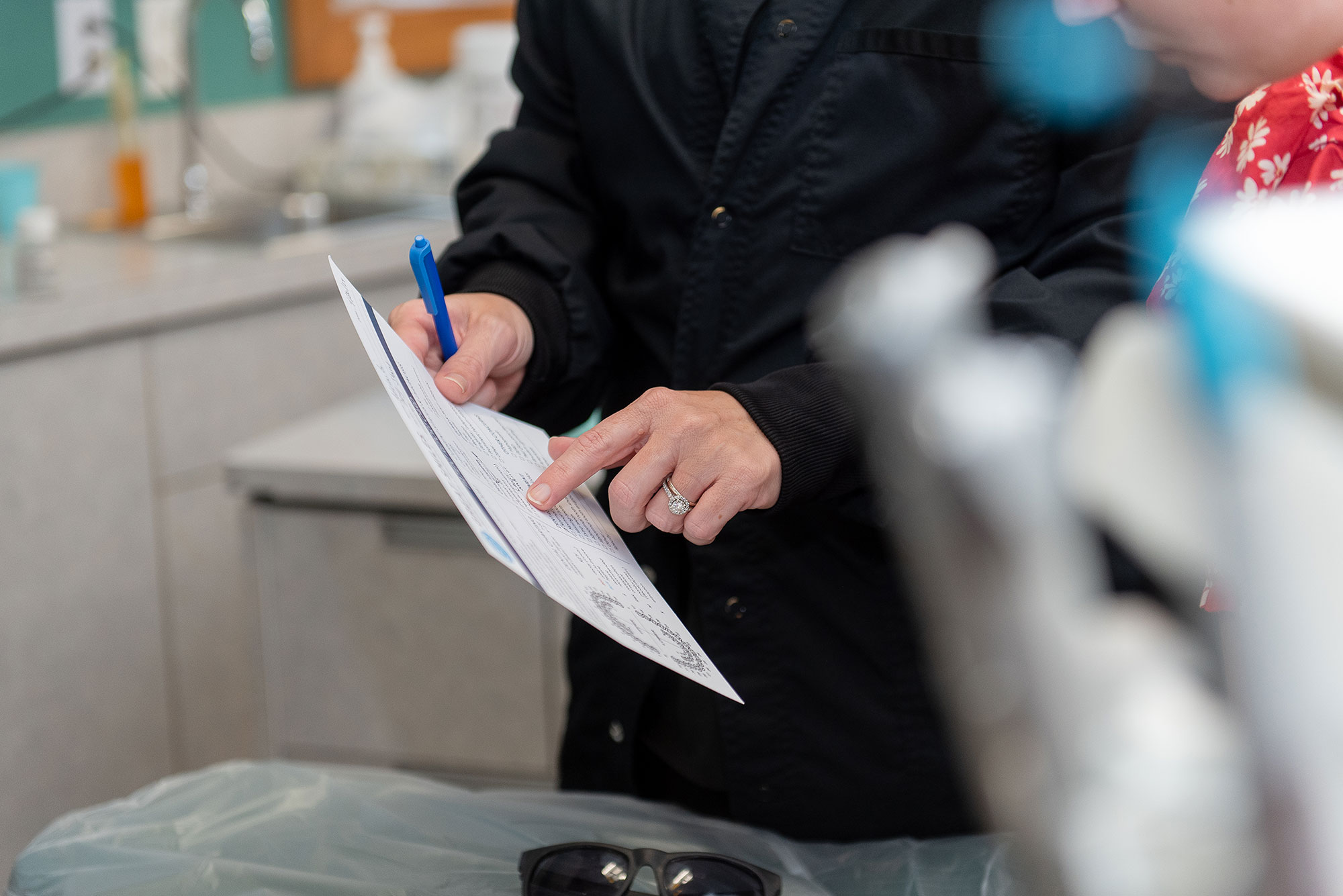Invisalign Braces
Invisalign Braces for All Ages
The Invisalign braces system combines advanced 3-D computer graphics technology with the 100-year-old science of orthodontics. Invisalign aligners are designed to move teeth in small steps to the desired final position prescribed by your orthodontist. Each aligner is precisely calibrated and manufactured to fit mouths at each stage of the treatment plan.
Your first step is to visit our office to determine if Invisalign is right for you. After sending precise treatment instructions, Invisalign braces uses advanced computer technology to translate these instructions in a sequence of finely calibrated aligners — as few as 12 or as many as 48. Each aligner is worn for about two weeks and only taken out to eat, brush and floss. As you replace each aligner with the next, your teeth will begin to move gradually — week-by-week until the final alignment prescribed is attained. Then you’ll be smiling like you never have before!
A Beautiful Smile with Invisalign Braces
Step 2: Digital Impressions
Step 3: Clear Aligners Made
Step 4: Invisalign Worn
Step 5: Regular Check Ups
Step 6: Complete Treatment

Choose Invisalign Braces: No Wires or Brackets
Invisalign straightens your teeth without wires and brackets, using a series of clear, customized, removable appliances called aligners. It’s virtually undetectable, which means hardly anyone will know that you’re straightening your teeth.
Orthodontists can provide these invisible brace treatments. We have information about Invisalign braces price as well as information about traditional braces.

Affording the Best Care
Our Great Smiles team works to find the best way to fit great dental care into your budget, with awesome payment options, maximized insurance benefits, and affordable solutions. Our FAQ pages have some answers to common questions about Invisalign or braces costs as well as dentist costs. Or, feel free to contact us for help. Plus, research shows that early dental visits can lower long-term costs, so we encourage families to come visit us at one of our five Great Smiles Pediatric Dentistry and Orthodontics locations.
Patient Reviews
What to do in Meantime
Sometimes you might not be able to get to see an emergency pediatric dentist right away. We’ve got some important tips for the most common emergencies here!
Your Title Goes Here
Your content goes here. Edit or remove this text inline or in the module Content settings. You can also style every aspect of this content in the module Design settings and even apply custom CSS to this text in the module Advanced settings.
Knocked-Out Tooth
First, find the tooth. Always handle the tooth by the crown (that’s the big chewing part) and not the roots (the pointy side). You can rinse it off, but don’t handle it unnecessarily. After inspecting the tooth for fractures, you can try to reinsert the tooth into the socket if it’s undamaged (have your child bite down on gauze to keep it in place). If you can’t reinsert it, place the tooth in a cup of milk until you can see us. While baby teeth are not usually replaced, we recommend seeing your pediatric dentist ASAP!
Broken Tooth
Use warm water to rinse the injured area and apply a cold compress over the face. Find and save any pieces of the broken tooth that you can, and call your dentist for immediate treatment.
Cut or Bitten Tongue, Lip, or Cheek
Apply ice to bruised areas and apply firm pressure with a gauze or a cloth to areas that are bleeding. If the bleeding doesn’t stop after 15 minutes (or it doesn’t respond to applied pressure), head to the hospital emergency room.
Toothache
Toothaches are the worst, and you’ll want to make an appointment with your pediatric dentist since there could be decay, infection, or worse! To help with the toothache, clean the affected tooth thoroughly and rinse with warm water. You can use dental floss to remove any impacted food or debris. DO NOT place aspirin on the gum or tooth! If the face is swollen, use a cold compress to relieve some of the pain.
No matter what, you’ll want to take your child to the pediatric dentist as soon as possible if you have any of these dental emergencies. Even if you can’t get to the doctor right away, make an appointment for follow-up care or treatment for your little one.



